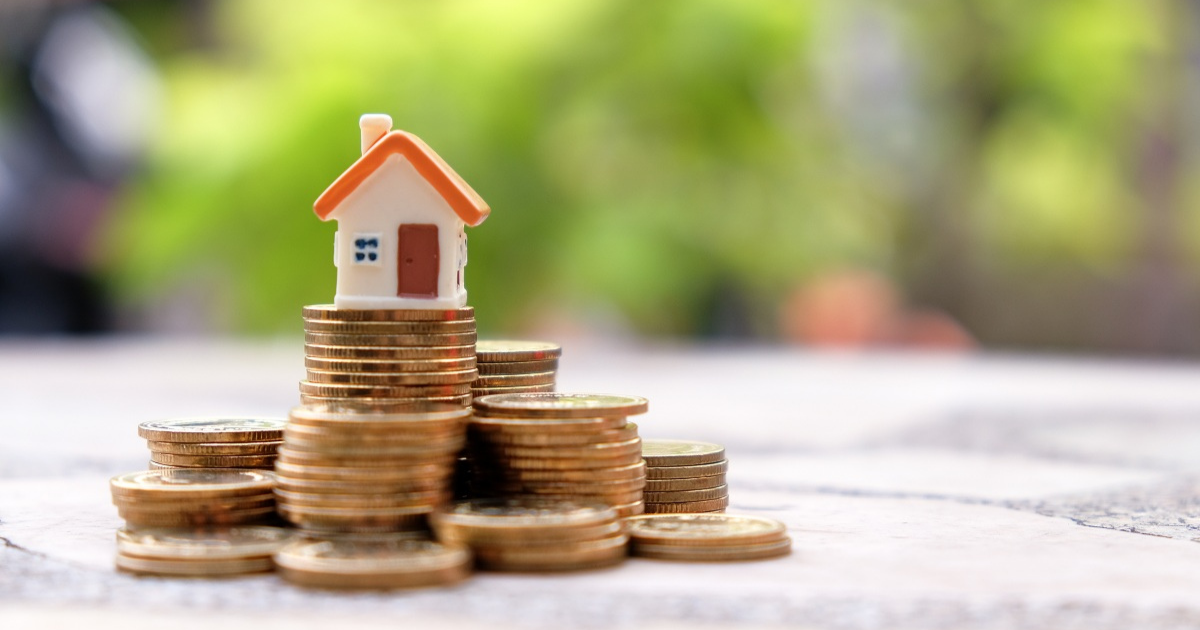Blockchain’s Answer: Tokenization for Assets, Real Estate.
- May 3, 2021
- Jennifer Moore

Blockchain allows for commodities and real estate to be represented by digital tokens that can be traded on an online platform. This concept is set to disrupt the respective markets. When they say, blockchain makes selling your asset or funding your real estate easy as a pie, what exactly do they mean? It is hard to imagine something as massive and concrete as a building trading like shares in exchange. And it gets even more absurd when they say that it’s put up in slices. But that is exactly how tangible assets and real estate goes up in a blockchain. We shall study the real estate tokenization and blockchain real estate solution in the following sections to gain a clear perception of the working of the same.
Also Read: Top Investing Trends to Watch Out For in 2021
Tokenization Explained
Tokenization of assets is the process of issuing a blockchain token that digitally represents a real tradeable asset. To explain the scenario, we imagine a person has $5000 with him that he wishes to invest in real estate as an early investment and later add to that in moderation. Maybe a couple of thousands every month. This would normally sound ridiculous. Who has ever heard of purchasing four or five square meters in an apartment?
Now if we reverse the situation, someone has a $200,000 apartment and needs only $30,000 quickly. How can he get the money using that property?
Here tokenization makes an entry packaged in another definition. Tokenization is the method of converting ownership rights of an asset into digital tokens.
The apartment worth $200,000 is convertable into 200,000 tokens with each token worth 0.0005% share of the property. If someone buys 80,000 tokens then they become owners of 40% of the property and if someone buys all 200,000 tokens they own 100% of the property.
The Benefits of Asset and Real Estate Tokenization
A ‘token economy’ reserves the potential to maintain efficiency and fair play in the financial market by diminishing the friction from the creation, buying, and selling of securities.
Greater Liquidity
After tokenizing assets they can now be moved to a secondary market of the issuer’s choice. Whereby, the issuer gains access to a wider base of investors likely to purchase the tokens enhancing its liquidity. This benefits the investors giving them greater freedom and the sellers who benefit from the “liquidity premium”, to grab a greater value from the underlying asset. Asset tokenization enables the automated transfer of ownership while ensuring compliance. With diminished complexity and costs, tokenized assets now can be invested with fiat money and P2P trading on regulated online platforms. This improves liquidity.
Faster and Cheaper Transaction
Transaction and transfer of tokens happen with smart contracts thus automating the exchange process. Automation removes the burden and complexities of buying and selling with middlemen. This results in faster processing and lessening of transaction fees.
Increased Transparency- A security token is a serious thing. It encases the token-holders rights and legal responsibilities apart from an immutable record of ownership. These characteristics inherent in the blockchain allow transparency of transactions. It makes both parties, the seller and the buyer known to each other, clearly states the rights and responsibilities of each, and also makes the previous owners of the tokens known.
Accessibility – A very important observation is that the tokenization of assets makes the assets accessible by a larger base of buyers. This is owing to the greatly reduced minimum investment amounts. The tokenization allows unbelievably small percentages of shares of the underlying asset. Also, territorial barriers do not get in the way of purchasing a property.
What Can You Tokenize?
Tokenizable items include artwork, sports teams, racehorses, bonds, real estate, venture capital funds, and commodities. Additionally, every asset class is tokenizable.
Real Estate- Tokenization facilitates fractional ownership as already discussed. This opens up opportunities for high capital and heightened market participation thus making way for expansion in investment markets.
Commodities- Commodities, when tokenized, offer new market opportunities across the trading lifecycle. The conversion to tradable digital assets allows increased liquidity and a great many barriers less for willing individuals, to enter into the asset market.
Physical Goods- Tokenization of non-liquid assets including artwork, wine, and partnership shares is impossible. This improves provenance along with transparency.
Also Read: PayBitoPro Brings Real-Estate Infrastructure With Plans of Global Collaborations
Challenges
In spite of the delightful assortment of benefits offered by this real estate tokenization and asset sale, there are certain roadblocks to it that calls for redressal:
Uncertainty in the code of conduct
There is a clear want for a standard code of conduct and practices regarding the development and management of tokenized assets. This forces financial entities to review business architecture and exposes investors to undesired practices. Implementation of the formal framework may be useful in instilling trust among all market participants.
Uncertainty in regulations
Despite the apparent nullity of territorial barriers, the difference in regulations among jurisdictions is gaping. This presents voluptuous trouble for the still-new Blockchain platform. Legislations and policies enable coordination among the authorities responsible for easing the working of digital asset management.
Things to Consider
Investigating the possibilities assured by the real estate blockchain solutions we need to look deeper into a few aspects to be able to judiciously approach the markets. Business model, Cyber Security, Jurisdiction, Platform Integration are some of them.
Asset tokenization and real estate tokenization are expected to usher a host of new actors, services, roles, and opportunities in the market. This is sure to give rise to innovative concepts to further benefit the trade.
Categories
- AI (9)
- Altcoins (10)
- Banking (10)
- Bitcoin (133)
- Bitcoin ETF (11)
- Bitcoin Price (30)
- Blockchain (49)
- Brokering World Hunger Away (16)
- Business (9)
- CBDC (11)
- COVID-19 (3)
- Crypto ATMs (1)
- Crypto Banking (17)
- Crypto Bill (1)
- Crypto business owner platform (31)
- Crypto Investment (3)
- Crypto Markets (5)
- Crypto Payment (29)
- Crypto Prices (1)
- Crypto Trading (92)
- Cryptocurrency (401)
- Cryptocurrency Exchange (108)
- Data Visualization (2)
- Decentralized Finance (7)
- DeFi Payment (9)
- DEX (3)
- Digital Currency (22)
- Ethereum (2)
- FAQ (6)
- Finance (24)
- Financial Equality (4)
- Financial Freedom (8)
- Forex (24)
- ICO (2)
- Investment (11)
- Mining (3)
- News (66)
- NFTs (2)
- P2P (1)
- PayBitoPro (692)
- PayBitoPro Coin Listing (6)
- PayBitoPro Exchange (2)
- Post COVID Digital Transformation (1)
- Press Release (130)
- Privacy & Security (3)
- Real Estate (1)
- Stablecoin (4)
- Technology (14)
- Uncategorized (3)
- US Presidential Election (2)
- Utility Coin (1)
- Web3 business (3)
- Web3 Wallets (2)
- White Label Crypto Exchange (6)
Recent Posts
- Why Blockchain Education Is Key for Web3 Adoption
- Web3 Business Marketing: Building Community and Brand for Your Crypto Venture
- Why Blockchain Awareness Is Critical Before You Dive Into Web3
- Why Market Research Is the Foundation of Every Successful Web3 Business
- Start A Web3 Business: A Step-by-Step Web3 Startup Guide for Entrepreneurs





